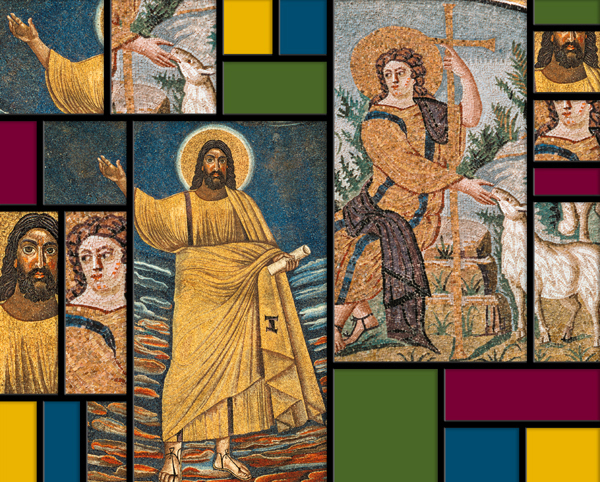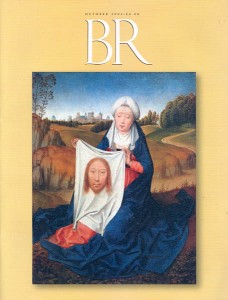
In the upper reaches of the Church of Sant’Apollinare Nuovo in Ravenna, just below the painted wood ceiling, appears a striking series of 26 mosaics portraying the life and passion of Jesus. Dating to the early sixth century, they constitute one of the oldest—perhaps the oldest—extant monumental series of images depicting Jesus’ life (see photos of mosaic panels from Ravenna below).
The small mosaic panels are divided thematically: Those on the left (northern) wall of the church are devoted to Jesus’ ministry. They show Jesus teaching (addressing the Samaritan woman at the well, for instance, and making an example of the widow who donated her last mite to the Temple), healing (curing the paralytic, the hemorrhaging woman and the man born blind) and working wonders (producing wine at Cana and multiplying the loaves and fishes). Those on the right (southern) wall depict Jesus’ last days: They begin near the apse with the Last Supper and end with Jesus’ post-Resurrection appearances to the apostles. In the final panel, next to the door, Jesus displays his wounds to the doubting Thomas.
Already a library member? Log in here.
Institution user? Log in with your IP address.

